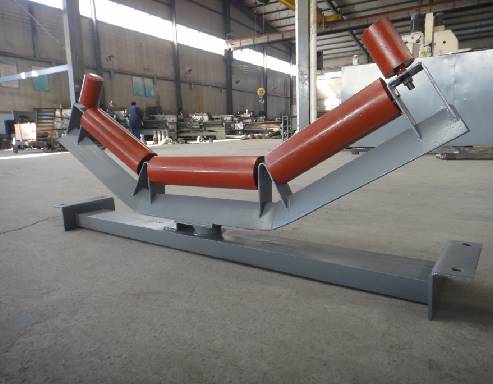 Afrikaans
Afrikaans  Albanian
Albanian  Amharic
Amharic  Arabic
Arabic  Armenian
Armenian  Azerbaijani
Azerbaijani  Basque
Basque  Belarusian
Belarusian  Bengali
Bengali  Bosnian
Bosnian  Bulgarian
Bulgarian  Catalan
Catalan  Cebuano
Cebuano  Corsican
Corsican  Croatian
Croatian  Czech
Czech  Danish
Danish  Dutch
Dutch  English
English  Esperanto
Esperanto  Estonian
Estonian  Finnish
Finnish  French
French  Frisian
Frisian  Galician
Galician  Georgian
Georgian  German
German  Greek
Greek  Gujarati
Gujarati  Haitian Creole
Haitian Creole  hausa
hausa  hawaiian
hawaiian  Hebrew
Hebrew  Hindi
Hindi  Miao
Miao  Hungarian
Hungarian  Icelandic
Icelandic  igbo
igbo  Indonesian
Indonesian  irish
irish  Italian
Italian  Japanese
Japanese  Javanese
Javanese  Kannada
Kannada  kazakh
kazakh  Khmer
Khmer  Rwandese
Rwandese  Korean
Korean  Kurdish
Kurdish  Kyrgyz
Kyrgyz  Lao
Lao  Latin
Latin  Latvian
Latvian  Lithuanian
Lithuanian  Luxembourgish
Luxembourgish  Macedonian
Macedonian  Malgashi
Malgashi  Malay
Malay  Malayalam
Malayalam  Maltese
Maltese  Maori
Maori  Marathi
Marathi  Mongolian
Mongolian  Myanmar
Myanmar  Nepali
Nepali  Norwegian
Norwegian  Norwegian
Norwegian  Occitan
Occitan  Pashto
Pashto  Persian
Persian  Polish
Polish  Portuguese
Portuguese  Punjabi
Punjabi  Romanian
Romanian  Russian
Russian  Samoan
Samoan  Scottish Gaelic
Scottish Gaelic  Serbian
Serbian  Sesotho
Sesotho  Shona
Shona  Sindhi
Sindhi  Sinhala
Sinhala  Slovak
Slovak  Slovenian
Slovenian  Somali
Somali  Spanish
Spanish  Sundanese
Sundanese  Swahili
Swahili  Swedish
Swedish  Tagalog
Tagalog  Tajik
Tajik  Tamil
Tamil  Tatar
Tatar  Telugu
Telugu  Thai
Thai  Turkish
Turkish  Turkmen
Turkmen  Ukrainian
Ukrainian  Urdu
Urdu  Uighur
Uighur  Uzbek
Uzbek  Vietnamese
Vietnamese  Welsh
Welsh  Bantu
Bantu  Yiddish
Yiddish  Yoruba
Yoruba  Zulu
Zulu Different Types of Conveyor Belt Pulleys Explained and Their Applications
Types of Conveyor Belt Pulleys
Conveyor belt pulleys are essential components in conveyor systems, playing a critical role in the movement and operation of materials across various industries. Understanding the different types of pulleys and their functions is key to optimizing conveyor performance and ensuring the longevity of the equipment. This article will explore various types of conveyor belt pulleys, their characteristics, and applications.
1. Drive Pulleys
Drive pulleys, also known as head pulleys, are located at the end of the conveyor system where the belt receives its driving force. They are typically powered by a motor, which drives the pulley to move the belt in the desired direction. Drive pulleys are designed with a rough surface to ensure a firm grip on the conveyor belt, preventing slippage. The power transmitted through drive pulleys is crucial for starting, stopping, and controlling the speed of the conveyor system.
2. Idler Pulleys
Idler pulleys, or return pulleys, are positioned along the conveyor belt to support and maintain its tension. They do not drive the belt but rather guide it along its path, reducing wear and tear on the system. Idler pulleys can be found in various configurations, including troughing, flat, and rubber-lined types, depending on the application. They play a vital role in preventing belt sagging and ensuring that materials are consistently moved along the conveyor.
3. Snub Pulleys
Snub pulleys are used to increase the friction between the conveyor belt and the drive pulley, enhancing the grip and power transmission. These pulleys are typically positioned at an angle to the drive pulley, allowing the belt to wrap around more of the driving surface. Snub pulleys are particularly beneficial in situations where additional tension and resistance against slipping are required, making them common in heavy-load applications.
types of conveyor belt pulleys

4. Tail Pulleys
As the name suggests, tail pulleys are located at the opposite end of the drive pulleys. Their primary function is to support the end of the conveyor belt and facilitate its return journey. Tail pulleys can be designed to prevent dust and debris buildup, which is crucial in maintaining the cleanliness and efficiency of the conveyor system. Additionally, tail pulleys often feature a tapered design to provide smooth transitions for the returning belt.
5. Take-Up Pulleys
Take-up pulleys are critical for maintaining belt tension throughout its operation. As the conveyor belt experiences wear and stretch over time, take-up pulleys can adjust the length of the belt to ensure it remains taut. This adjustment prevents slack, which can lead to misalignment and operational issues. Take-up systems can be manual or automatic, providing flexibility to accommodate various conveyor designs and operational requirements.
6. Wing Pulleys
Wing pulleys are designed with a series of curved and angled wings that help to shed material that may adhere to the pulley surface. This design minimizes the buildup of debris and reduces the chances of belt slippage. Wing pulleys are particularly useful in bulk material handling applications, such as mining and agriculture, where materials can stick to standard pulley surfaces.
Conclusion
In summary, conveyor belt pulleys are vital components that facilitate the efficient operation of conveyor systems. By understanding the different types of pulleys—drive, idler, snub, tail, take-up, and wing—industries can make informed choices regarding their conveyor systems. Proper selection and maintenance of these pulleys will contribute to improved performance, reduced downtime, and enhanced operational efficiency in material handling processes. Whether used in manufacturing, warehousing, or mining, the right pulleys will ensure that the conveyor system runs smoothly and effectively.
-
Wing Pulley Conveyor for Conveyor Belt MaintenanceNewsJun.16,2025
-
Self Cleaning Spiral Idler for Conveyor DesignNewsJun.16,2025
-
Pulley Lagging for Conveyor Belt AlignmentNewsJun.16,2025
-
Impact Idlers Used in Belt Conveyor for PerformanceNewsJun.16,2025
-
Ceramic Lagging Conveyor Pulley for Conveyor Belt SystemsNewsJun.16,2025
-
Belt Conveyor Idler for Heavy-Duty ApplicationsNewsJun.16,2025





























